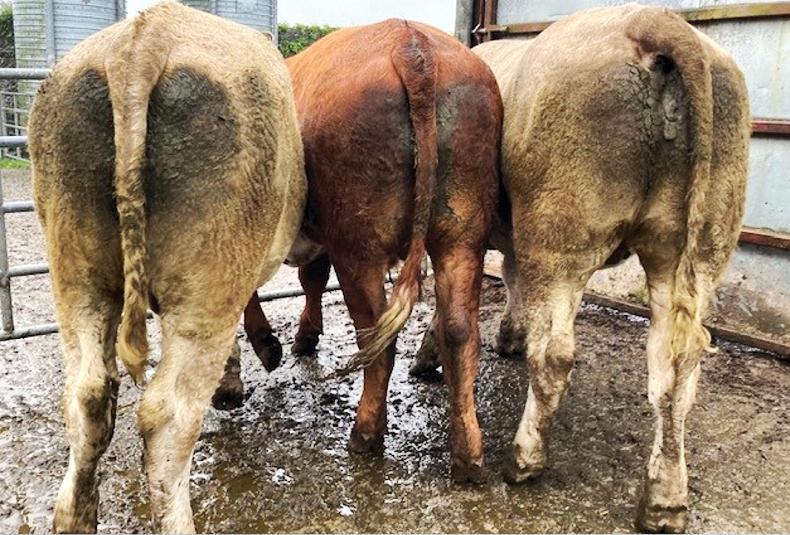Newford Farm selected the first three 2019-born bullocks for slaughter this week.
The three bullocks averaged 675kg liveweight and delivered an average carcase weight of 368.7kg and sale price of €1,427 per head. Their individual performances are summarised in Table 1 below.
The bullocks were slaughtered off grass without any concentrate feeding. Farm manager Iarlaith Collins is happy with the slaughter performance, particularly as bullocks were aged less than 19 months of age.
Iarlaith says it is likely that concentrate feeding will be introduced shortly to bullocks in light of the dry matter in grass falling on a weekly basis.
Concentrates were also introduced to a percentage of heifers this week at a rate of 3kg per head. The meal was introduced to a batch of the lightest 18 heifers with an average liveweight of 492kg.
The reasoning for introducing concentrates to these heifers is to underpin performance and try to increase the number of cattle finished off grass.
The batch of 39 heavier heifers weighing 526kg on average are on target for finishing off grass without concentrates, but, as reported previously, the earliest these heifers can be slaughtered is 5 October.
This is due to a long withdrawal related to treatment for coccidiosis.
Breeding performance
The batch of 20 cows bred later in the season were scanned last week. There were nine of the 20 cows scanned empty and following excellent breeding performance earlier in the season, this brings the total empty rate to 10 out of the 93 cows put forward for breeding.
This is a positive result, with 58 (62%) of all cows holding to first service, 19 (20.4%) to second service and six cows to the third service.
This will help maintain a tight calving interval in 2021 and maximum performance of progeny off grass.
The 10 empty cows and three cows not put forward for breeding will now be batched together.
Finishing plans are currently being assessed and could include weaning the cows early in the next week or introducing concentrates while calves are suckling and drafting for slaughter once fit.
Calves have taken well to creep grazing and creep feeding. They are grazing ahead of cows by means of a raised electric wire, which is simply raised using two taller PVC horse posts.
Meal is being offered in troughs and calves are consuming in the region of 1kg on average per day.
Grassland management
Grazing management is tricky given the recent heavy rainfall. Iarlaith reports that he is targeting drier paddocks where possible when heavy rain is forecast and moving animals faster through the rotation during these periods.
Attention will soon turn to closing paddocks for grazing next spring and a grazing plan is in place to finish the final rotation.
Three-quarters of a bag of protected urea (38N +7% S) containing 7% sulphur is being applied after each grazing, weather permitting.
Grass growth on the Newford block has eased back to 51kg DM/ha and is running slightly ahead of demand of 45kg DM/ha.






 This is a subscriber-only article
This is a subscriber-only article









SHARING OPTIONS: